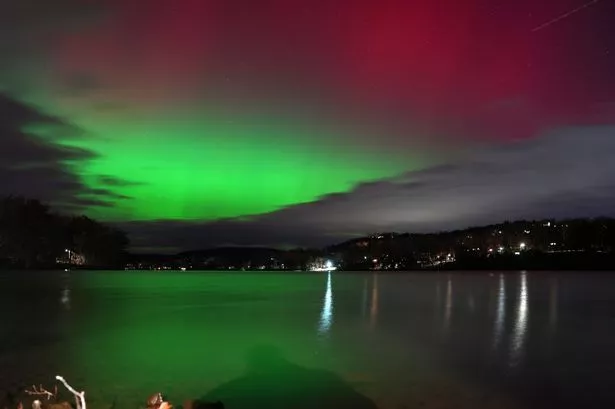UPDATE: Residents across New Jersey were treated to a stunning display of the Northern Lights last night, with more breathtaking views anticipated tonight, November 12. This rare phenomenon, also known as the Aurora Borealis, was propelled by a powerful geomagnetic storm caused by a massive eruption from the sun.
The spectacle reached as far south as southern New Jersey, with skywatchers in locations like Cape May County and Metuchen capturing shimmering bands of purple and green lighting up the night sky. This event marks one of the most vivid auroral displays in recent memory, thrilling photographers and stargazers alike.
According to the NOAA Space Weather Prediction Center, the light show was triggered by an intense coronal mass ejection (CME) from sunspot region 4274. This CME, which ranked as the sixth strongest solar flare of the current solar cycle, prompted a G4 (severe) geomagnetic storm watch, one of the highest levels of alert, for tonight.
Data from SpaceWeatherLive.com confirmed that the plasma cloud is on a direct collision course with Earth, leading to a spectacular geomagnetic disturbance. Reports indicated that the aurora extended across much of the northern United States and parts of Europe, with brilliant displays observed from Reeds Beach along the Delaware Bay and faint colors seen over Metuchen.
More auroral activity is expected tonight, with NOAA stating the aurora “may become visible over much of the northern half of the country, and maybe as far south as Alabama to northern California.” Residents in states down to Arkansas, Nevada, and potentially northern California are also in for a chance to witness this celestial phenomenon.
The solar flare was at its weakest on Tuesday, November 11, with NOAA’s storm watch indicating a G2 (moderate) storm for that date, followed by the severe G4 storm for tonight and a G3 (strong) storm anticipated for November 13. Experts suggest that clearing skies may improve visibility across New Jersey.
For those looking to catch a glimpse of the aurora, it is crucial to find areas with minimal light pollution. The prime viewing time is around midnight, according to NOAA. However, the agency also cautioned that such strong geomagnetic storms could temporarily disrupt satellites, navigation systems, and power infrastructure.
As the current solar cycle approaches its peak in 2025-2026, experts predict that similar light shows and potential space weather impacts will become increasingly common. This captivating display not only offers a stunning visual experience but also serves as a reminder of the dynamic interactions between the sun and Earth.
Stay tuned for updates as the Northern Lights continue to enchant viewers across the region!







